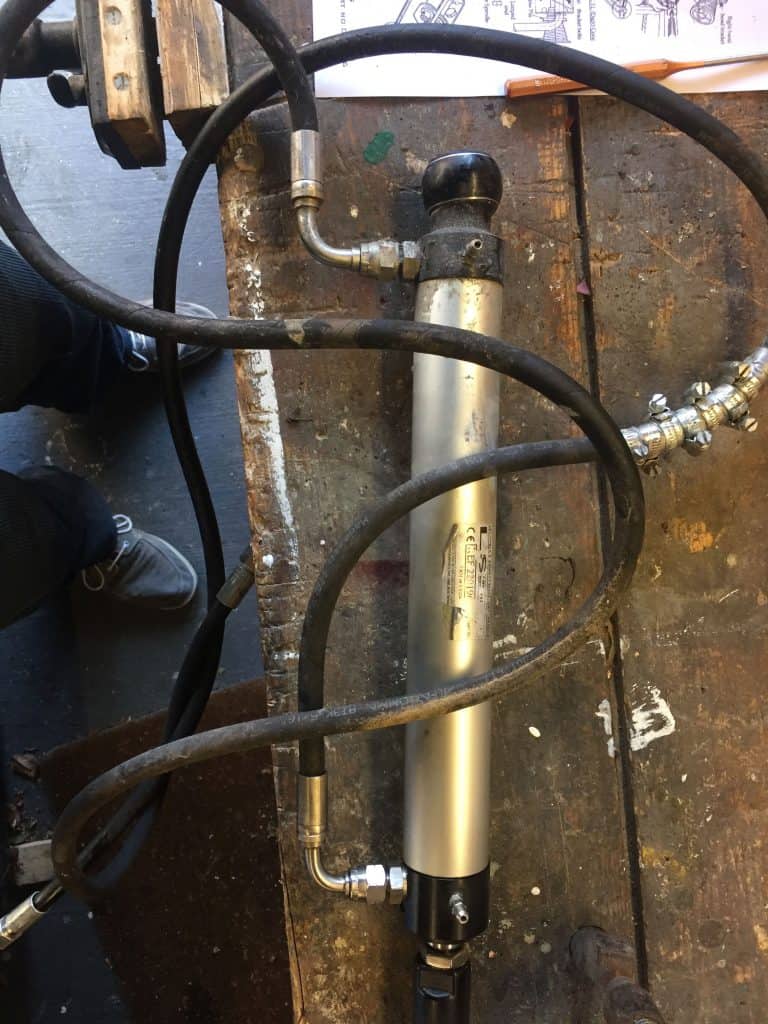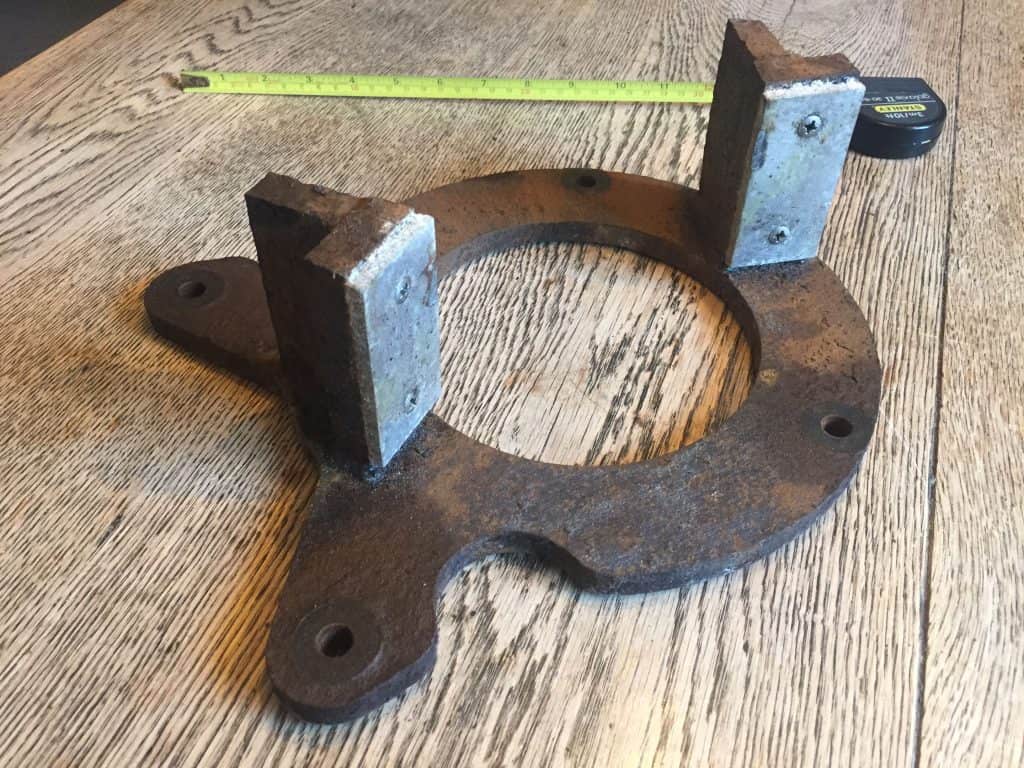Antipole spent September and October in the Camber dock in Portsmouth – convenient for Tony to work on various jobs.
In mid-September we joined the Portsmouth Sailing Club rally to Yarmouth, Isle of Wight. We have been too far away to join these rallies for some years.
At the end of October we sailed from Portsmouth to our old base at Ridge Wharf Yacht Centre on the River Frome near Wareham. We stopped overnight in Newtown Creek, an old favourite, and again off Brownsea Island Castle. It was late in the season and rather chilly.
We finally arrived at Ridge Wharf to warm greetings from many old friends. Not much has change there after nearly four years and it was good to be in familiar surroundings. Antipole was lifted out on 4th November and we took the train back to Portsmouth.
Tony returned with the car to carry out laying up tasks and dismantle various bits that require work over winter.
We will post more news next season.
For those who are interested, there follow details of the major works we are have embarked on during this refit. Others can stop reading here!
love to all, Ynskje and Tony
Fuel polishing system
We use very little diesel and some of the 240 litres we carry may have been in the tank for years. Stored Diesel is prone to the dreaded Diesel bug which has caused many yacht engines to clog up. Things are made worse by the increasing proportion of bio-Diesel now being used. We have rigorously used an additive that emulsifies any water in the fuel, upon which the bugs depend.
Tony has now fitted a “fuel polishing circuit”. An extra pump and valves allow the fuel to be circulated through a high capacity filter and back into the tank, thus filtering the fuel to remove anything that might clog the engine.
This system has been run for 24 hours and the filter remains clear. So there is no evidence of contamination. But it will be good to be able to polish the fuel from time to time and especially after having taken new fuel on board. Some yachts have had problems after taking on contaminated fuel.
NMEA2000 to WiFi Gateway
Most of the instrumentation on Antipole is connected to a NMEA2000 data bus that runs from the top of the mast to the stern. We have relied on a Mac computer program to interface with this bus, perform navigational tasks and retransmit data over WiFi to the iPad at the wheel station and to iPhones. Alas, the navigational program is obsolescent and will no longer run after the next computer system update.
We now have a new NMEA2000 to WiFi gateway – a small box which takes over that function from the old system. There is still work to be done to replace all the functionality of the old system, which will be much missed.
This was very timely, as on the passage back to Poole the computer stopped working (perhaps because of the cold) and we were able to navigate using the iPad without the computer.
Mast head tri-colour light improved
Atop the mast, we have a red-green-white three-colour LED light, which is used at night when under sail. This is very energy efficient and can be seen from good distance. However, when viewed from straight ahead, when we should be showing red and green lights, the colours mix to show yellow – easily confused with white and suggesting we are going away rather than straight towards the observer.
Tony has now fitted baffles in the light which should reduce this problem. This involved Ynskje twice hoisting him up to the top of the mast. On one occasion a halyard capsized on the winch and he was stuck upon there for quite a while 😫
The new staysail project
In heavy weather, the large Genoa sail becomes too much and a liability. The proper thing to do is to deploy the storm staysail – a much smaller sail that is hanked onto an inner forestay or baby stay. This takes a considerable time to rig and is not something Tony wants to do – working on deck when the weather is already too heavy for the Genoa.
The answer is to have the staysail ready to host, as we had on the recent passage from Dover to Newhaven. However, when the baby stay is rigged, it prevents tacking the Genoa without rolling the Genoa up and out again, which is very tedious and hard work, especially when short-tacking. So we do not rig the baby stay unless we think we might need it. Trouble is, sometimes the wind blows up more than forecast and we have, several times ended up wishing we had the staysail available.
We are going to try a ‘soft furling staysail’. We do away with the wire baby stay and instead have a new staysail which furls onto an anti-torsion stay. When the staysail is not required it can be furled and drawn back to the mast out of the way of the tacking Genoa. It can even be removed altogether but rigged quickly if required.
High tension is required in the anti-torsion stay to keep the sail from sagging in a blow without the support of the the baby stay. We have been advised not to rely on a conventional halyard. Rather the head of the sail will lock into a socket on the mast and the sail tensioned from below by winching via a 3:1 purchase on low friction high load blocks.
This has required specialist advice from riggers who visited Antipole while she was in the Camber dock. Next week they will visit at Ridge Wharf to fit the new rigging. After that, the sail maker can come to measure up for the new staysail.
Secondary sheet winches
Up until now, we have had just one pair of sheet winches, primarily used for the Genoa. There have been many times when it would have been good to have a second winch, especially when controlling a gybe. Also it has not been possible to set the stay sail and Genoa together.
We will probably want to sometimes set the new staysail as well as the Genoa for which secondary winches are essential. We have now fitted a pair of secondary winches aft of the main ones. They were much appreciated on our sail from Portsmouth to Poole, even without the staysail.

Backstay tricing
When the staysail is set, we need extra backstays to support the mast at the top of the sail. These backstays are ‘running’, in that they are tensioned when required the windward side but slackened off on the leeward side to avoid fouling the mainsail. When slack, they thrash around uncontrolled.
Different owners have tried various methods of tricing them – trying them up to control them. We are trying bungee. To allow the backstay to be tightened when set and yet keep sufficient tension when the backstay is slackened off, requires a considerable length on bungee. We now have 10m of bungee on each side running from the the base of the shrouds, up to the first cross tree, back down to the first point and then out to the backstay.
It remains to be seen how successful this is.
Steering gear repairs
Followers of this blog may recall that in August 2018 we had a steering failure, whereby the wheel was no longer connected to the rudder – a nasty surprise! A rose joint had worn and the drag link that connects the wheel output to the tiller had dropped off. At the time. we did a temporary repair with a large washer to keep the link on.
The time has come to repair this properly but getting the old ball joint off its pin under the steering column has been a major effort involving a blow torch to heatings up, loads of easing oil and much hammering on a ball joint separator. Success eventually and a new rose joint end fitting is on order.
After a warning from other owners, an inspection had revealed that the hydraulic hoses that connect the autopilot to the rudder were cracking. Time to dismantle the hydraulics system. New hoses are being made up at this time.
Underneath the steering pod the structure that stops the rudder turning too far has been rusting away and shedding layers. It is made of steel but exposed to sea water. The original paint finish had long gone. It seemed impossible to access this but Tony has managed to get it out by dismantling the steering pod. He is now consulting fabricating engineers on whether to have a replacement in stainless steel or have the original one dip galvanised and powder coated.

Hydraulics with tempory fix for cracking hose 
Rusting rudder stop ring
